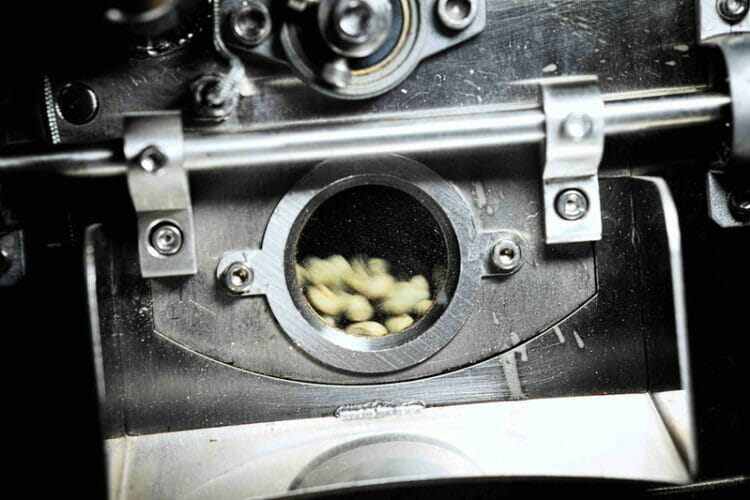
How the process of expelling CO2 from the coffee bean affects the flavor and freshness of the final cup.
Degassing is the process by which coffee expels the carbon dioxide generated during roasting. It is one of the aspects that most influences the quality and flavor of the final cup. Carbon dioxide (CO2) is a consequence of the Pyrolysis, which occurs during roasting and is responsible for most of the flavors and aromas of coffee.
Pyrolysis is a chemical reaction that occurs during the final stage of coffee roasting. It is considered one of the most important chemical reactions in this process because it is at this point that the sugars present in the coffee bean are converted into other compounds. During pyrolysis, energy is released and gas is produced. This reaction is responsible for many of coffee's flavors and aromas, as well as its color and texture.
However, CO2 can also hinder coffee extraction during brewing, which can affect the quality and flavor of the final cup.
The right roast: key to coffee freshness
During roasting, CO2 is also released from the bean, which is produced as a byproduct of the Maillard reaction. If roasting is carried out improperly, for example, if the bean is roasted too quickly or at too high a temperature, excess CO2 may be released from the bean, which in turn will cause problems with proper degassing. This can affect the freshness and flavor of the coffee and hinder extraction during brewing.

That's why it's important to ensure proper and controlled roasting to ensure the right amount of CO2 is released from the bean and to obtain high-quality, flavorful coffee. This includes controlling factors such as temperature, time, and the roasting profile used.
Coffee degassing: time and factors to consider
Degassing is the process by which carbon dioxide is removed from the coffee bean after roasting. This can be done naturally by letting the coffee sit or by using sealed bags with valves that allow CO2 to escape and prevent it from entering the air. A balance in degassing is necessary to ensure the coffee has excellent freshness and flavor.
The time required to complete degassing can vary, but a period of one to two weeks is generally considered sufficient for most types of coffee. However, it's important to note that degassing time can also vary depending on the roasting type and brewing method. For example, for espresso machines, it's recommended to let the coffee steep for 10 to 15 days, while for filter coffee machines, four days may be sufficient. Degassing is important not only for the freshness of the coffee but also for its flavor and aroma, as once the CO2 has been eliminated, the flavors and aromas of the coffee are more pronounced and can be fully enjoyed. Furthermore, good degassing can also improve coffee extraction during brewing, which can lead to a more balanced and rounded cup.

Bubbles in espresso crema: a sign of trapped CO2
Espresso crema is a thin layer of light brown foam that forms on top of the cup and is composed primarily of oils and proteins. The CO2 is trapped in the coffee bean after roasting. If the coffee is brewed immediately after roasting, the CO2 may not have had enough time to escape and can affect the crema. This can manifest itself in the formation of bubbles, which affect its appearance, flavor, and aroma.
Don't forget that every coffee bean is different: some may take longer to degas than others. If it's been a few days since you roasted your coffee and the extraction isn't what you expected, give it a little more time. But don't leave it unprepared for a full month.